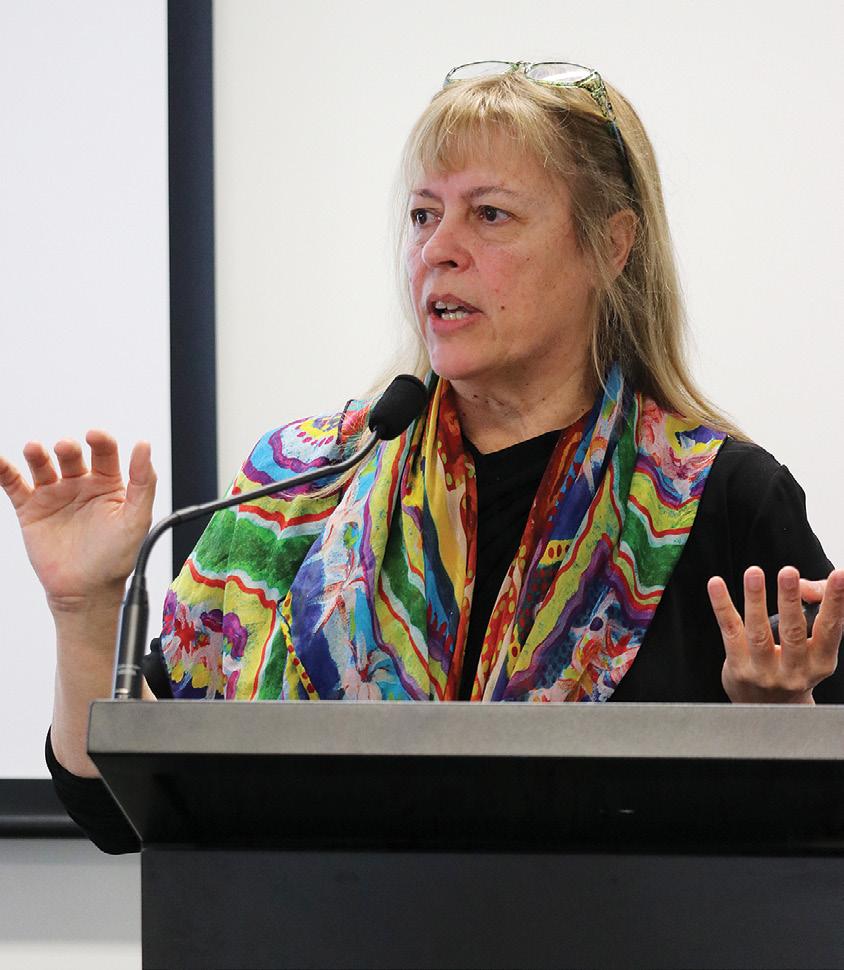
3 minute read
January 19 February
ECE: Keynote speaker Professor Helen Milroy. ECE: Karen Prosser and Dee Kitson.

Advertisement

ECE: Workshop presenter Louise Rabbone speaks on mental fitness.

ECE: Conference attendees follow Professor Helen Milroy’s presentation. ECE: Frances Keeley.


ECE: Diana Cooper intently taking notes.
National education and union news

Public schools underfunded, teachers underpaid: OECD
Findings in the Organisation for Economic Co-operation and Development’s (OECD) Education at a Glance 2021 report show Australia continues to fall behind its OECD peers when it comes to investment into public education. These latest findings highlight the critical need to invest in public schools, address escalating workloads and increase teacher salaries by a substantial margin, the Australian Education Union says. “We have a responsibility to ensure every Australian child has the opportunity to thrive and achieve to their full potential. This data shows we are lagging on fulfilling that responsibility in comparison with other OECD nations,” AEU Federal President Correna Haythorpe said. “There is a vast gap in public expenditure on education between Australia and comparable nations and economies, which must be urgently addressed with increased Federal Government funding for public schools. “The report has also intensified our concerns about low teacher salaries and excessive workloads. It shows that Australian teachers are working harder without the appropriate salary remuneration and recognition of their work.” The OECD has found that:
• Australia spends 10.5 per cent of total direct public spending on school and preschool education, less than 12 other nations.
• Australia’s expenditure on upper secondary education at 1.6 per cent of total public expenditure is 30 per cent below the OECD average (2.3 per cent) and fourth lowest among OECD nations and economies.
Australia compares unfavourably to 18 countries regarding teacher salaries and has a flatter scale for salary progression, leaving senior teachers without appropriate recognition of their skills and experience.
• Australia has a very flat salary scale with teachers at the top of the scale earning only 1.46 times the graduate salary, well below the OECD average ratio of 1.85 between graduate salaries and the top of the salary scale.
• To achieve the same level, Australian teachers require a salary increase of more than 25 per cent at the top of the scale. Despite that, Australian teachers have excessive workloads and spend more time in the classroom than the OECD average. • Primary teachers spend 878 hours per year in the classroom, 11 per cent more than the OECD average of 791 hours per year. • Lower secondary teachers at 828 hours per year in the classroom, 14.5 per cent more than the OECD average of 723 hours per year. • Upper secondary teachers at 821 hours in the classroom per year, 19.9 per cent more than the OECD average of 685 hours per year. “The OECD report underlines the need for better resources, more teachers and education support staff, and better pay and conditions for all,” Ms Haythorpe said. “The Federal Government must acknowledge the need for more investment in public education and urgently provide additional funding. That is how we lift Australia’s performance and how we best ensure every school has what they need to ensure every child has the opportunities they deserve.” The OECD’s Education at a Glance 2021 report is available at: bit.ly/3nEZM3P
About 146,000 workers lost their jobs, and those still in jobs have lost 66 million hours of employment in the month of August alone. Youth unemployment increased to 10.7 per cent, and underemployment also rose to 9.3 per cent, according to latest data from the Australian Bureau of Statistics. This data reflects the reality of sweeping lockdowns across the country without the JobKeeper wage subsidy in place to keep working people connected to their jobs,









